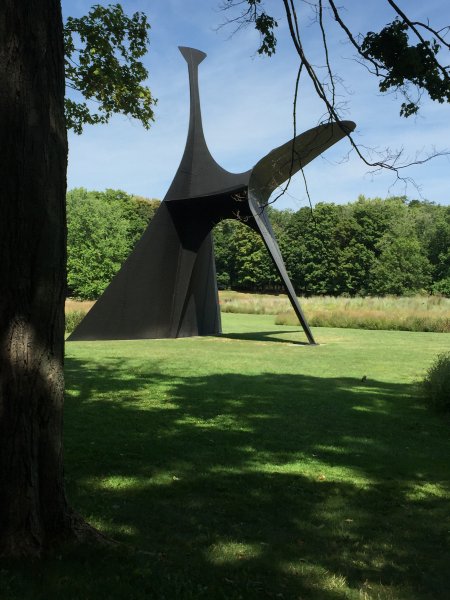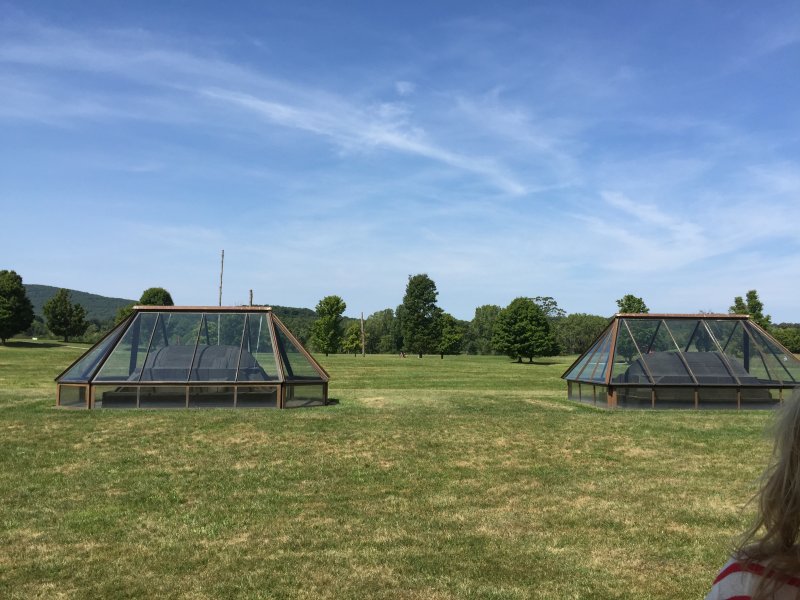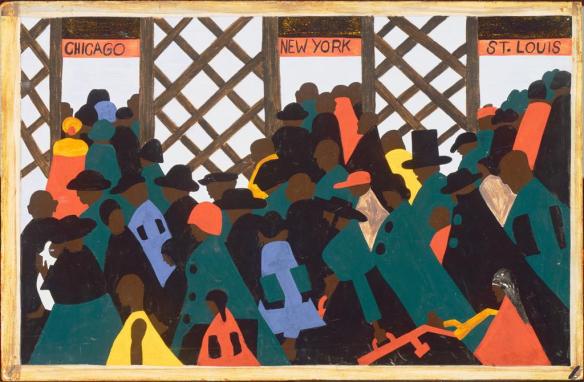Under a huge, radiantly golden, full moon tonight, I went with the graveyard shift to tour the Mark Twain House with the specter focus. No pictures were allowed inside, but according to The Atlantic Paranormal Society or TAPS, photos don’t tend to survive an encounter.
 With one exception. This upstairs window on the left equates to the Clemens’ daughters’ bathroom. One photo caught a girl looking out the window when no one was in the house.
With one exception. This upstairs window on the left equates to the Clemens’ daughters’ bathroom. One photo caught a girl looking out the window when no one was in the house.
Alas, my photo is quite ordinary.
As you can tell from this sunset photo, the house is very grand. Inside, it’s also very dark and was barely lit for our tour. Easy to imagine the spectral encounters reported by guides and visitors.

Here are a few. The three girls still sit on the center hall stairs, where apparently they hung out to eavesdrop on their parents’ entertainments in the dining room. Susie, who died in the house, floats from room to room in her white, Victorian dress. Then there’s the loud, unexplained bang in the library. The silver tray thrown at a security guard, clattering to the ground. And the playful taps on the shoulder and sensations of fingers running through your hair.

Samuel Clemens, aka Mark Twain
I was most intrigued by Sam Clemens’ belief system. He was born in 1835, the year of Haley’s Comet. Victorians believed that births during a natural phenomenon made the child more sensitive to psychic phenomenon. Clemens not only believed that “two freaks came in together” (he and the comet), but would also go out together. As indeed happened. He died in 1910, with the return of Haley.
One vivid experience confirmed his beliefs about himself. He dreamed of his brother’s death, including seeing his body in a morgue with a wreath of white roses on his chest and a red rose at center. The next day, Twain’s brother was killed in a freak accident, and the would-be author was brought to the morgue to see his brother. All the victims were laid out together. You can guess what he saw.
Clemens also believed he could smoke out fakers. He had an enormous print of his palm and hand made, which he then sent anonymously to psychics and mediums. He would judge from their return reading whether they were genuine. Famously, one he debunked had read the palm and declared that “the owner has no sense of humor.” Obviously, a fraud!
Part of the TAPS method, with their Ghost Hunters television program, is to use equipment to measure electromagnetic currents. Certain spots in the house were hot. The investigators also spent a night in the house, not to prove that there are spirits, but attempt to prove there are not. Debunking is their approach. They couldn’t at the Mark Twain House.
During Twain’s era, Spiritualism was a serious practice, and the Clemens’ and their neighbors, the Beecher Stowe’s, held seances. Clemens wanted to connect with his dead brother. Victorians believed that spirits lingered, likely a comforting thought with such high mortality rates among children, their mothers, and Civil War soldiers. Yes, shrewd fakers took advantage of a culture of grief. I certainly did my own investigation of Spirit Photography.
Who’s to say the Victorians were wrong? Certainly TAPS couldn’t. Check out their video.



 Maybe the
Maybe the 



































 Today, I visited the historic house where Valerie is on the Board. The
Today, I visited the historic house where Valerie is on the Board. The 




 Mashantucket tribe. My first impression was, this is a lot of museum for the experience. The excess of architecture was even more exaggerated by the long walk through open space–“follow the paw prints”– to the long ramp going down to the exhibits. I was already a bit visually exhausted.
Mashantucket tribe. My first impression was, this is a lot of museum for the experience. The excess of architecture was even more exaggerated by the long walk through open space–“follow the paw prints”– to the long ramp going down to the exhibits. I was already a bit visually exhausted.









 Wabanaki Tribal member
Wabanaki Tribal member







